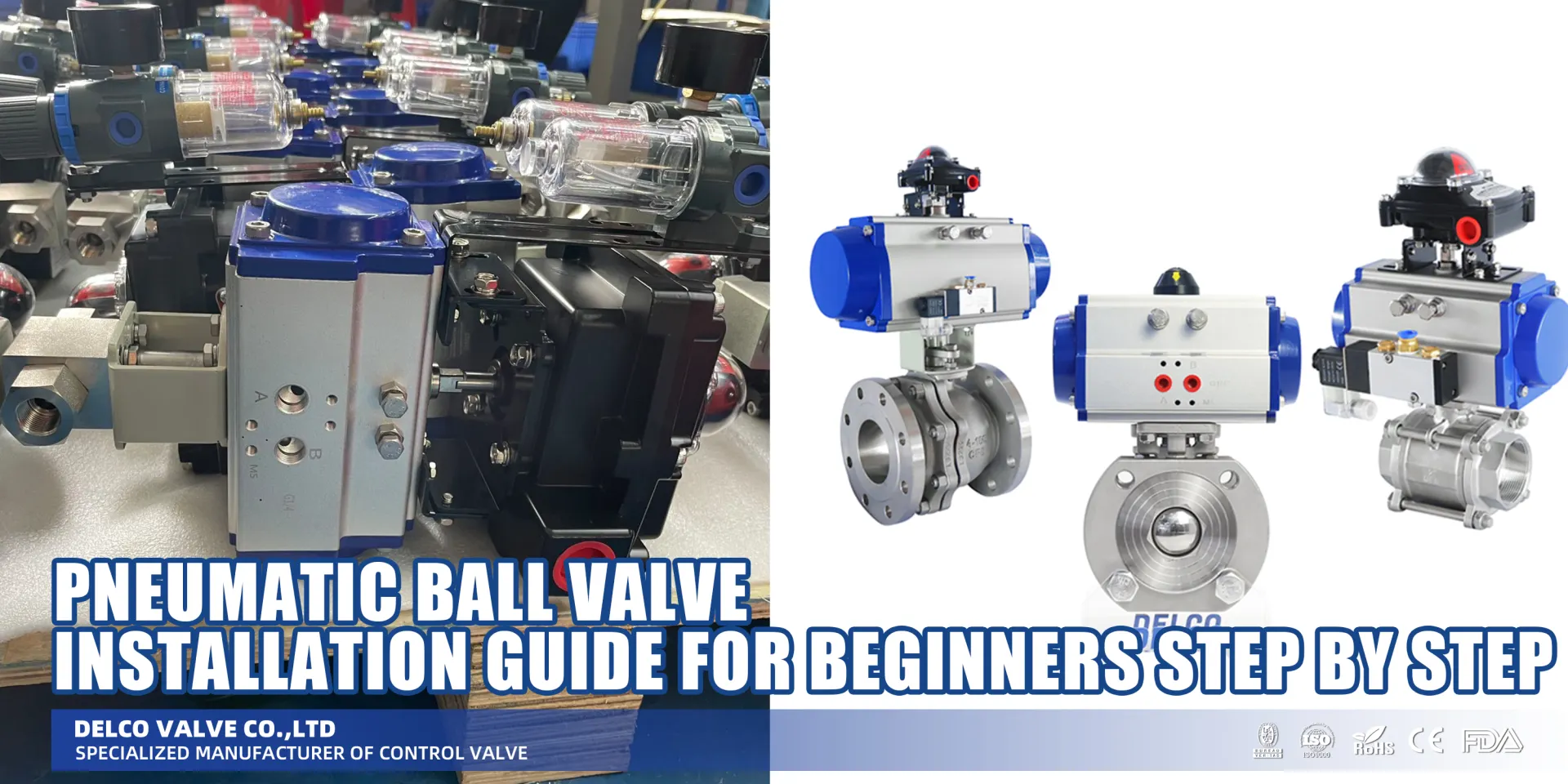Do You Support OEM Branding?

Different Types of Valve Actuators Working Principles and Benefits
Nov 29, 2025

Pneumatic Control Valves Overview Advantages and Industrial Applications
Nov 29, 2025

Ball Valve Maintenance Guide Preventive Routine Procedures 2026
Nov 29, 2025

Pneumatic Ball Valve Installation Guide for Beginners Step by Step
Nov 29, 2025
In today’s competitive market, building a strong and recognizable brand is essential for any business, especially when it comes to consumer products. One of the most effective ways to enhance your brand's visibility and reputation is through OEM branding (Original Equipment Manufacturer branding). But what exactly does this mean, and how can it benefit your business? Let’s explore.
What is OEM Branding?
OEM branding refers to the practice of having a product manufactured by a third-party manufacturer but branded under your company’s name and logo. This can include everything from custom labeling and packaging to designing a product specifically for your brand. The products are produced by the manufacturer, but they are marketed, sold, and recognized as your brand’s offering.
How Does OEM Branding Work?
The process of OEM branding typically involves the following steps:
- Product Selection:
- You select the type of product you want to sell under your brand. This could range from electronics, beauty products, and automotive parts to household items, tools, and more.
- Customization:
- The product is then tailored to meet your specifications. This could involve customizing the design, colors, size, or materials used in the product to match your brand's identity.
- Branding and Labeling:
- Your logo, name, and any branding elements are added to the product or packaging. This could be done through printing, embossing, or custom labels.
- Packaging:
- Custom packaging is created to reflect your brand’s image. This includes everything from boxes, bags, and labels to specialized packaging that communicates your brand message and makes the product stand out.
- Quality Control and Assurance:
- The manufacturer ensures the product meets your quality standards, as well as any relevant industry regulations. This step is critical in maintaining brand integrity and customer trust.
Why is OEM Branding Important?
- Builds Brand Identity:
- OEM branding allows you to establish a unique brand identity. When customers purchase products with your logo, they start associating the product's quality and features with your brand. This fosters brand loyalty and recognition.
- Increases Product Value:
- Offering products under your own brand can add perceived value. Whether you're offering premium items or affordable solutions, the branded product is often viewed as higher quality because it represents your company’s reputation.
- Expands Market Reach:
- OEM branding allows businesses to offer a wider range of products without investing in manufacturing facilities or development costs. This makes it possible for smaller companies to enter markets that would otherwise be too expensive to access.
- Customization:
- Through OEM, you have control over the product’s look, feel, and features. This means you can create a product that fits your customers' needs and aligns with your brand image more closely.
- Focus on Marketing, Not Production:
- With OEM, your focus can remain on marketing and customer service, while the manufacturer handles the production and logistics. This allows you to grow your business more efficiently, reducing overhead costs and investment in manufacturing infrastructure.
OEM Branding in Different Industries
- Electronics:
- Companies often source electronics from trusted manufacturers but rebrand them with their own logos and packaging. This is common in gadgets, mobile phones, and accessories.
- Beauty and Personal Care:
- Many beauty brands partner with manufacturers to create skincare or cosmetic products that are customized and branded with their names, such as makeup lines or skincare solutions.
- Apparel and Accessories:
- Clothing brands often utilize OEM branding to create custom apparel or accessories that fit their unique design and style.
- Automotive Parts:
- Car parts manufacturers may offer OEM branding options for aftermarket parts, such as brake pads, filters, or lighting, allowing companies to sell these parts under their own brand.
- Home Goods and Consumer Products:
- Household items such as kitchenware, cleaning supplies, and furniture are frequently produced under OEM agreements and branded for a specific retailer or company.
Benefits of Working with an OEM Partner
- Cost Efficiency: By outsourcing production, you can avoid the high capital expenditures of establishing a manufacturing facility.
- Faster Time-to-Market: OEM partners often have established production lines, which means you can get your product to market faster.
- Access to Expertise: Manufacturers have the expertise in producing high-quality goods, ensuring that your products meet industry standards.
- Focus on Core Competencies: By delegating production to an OEM, you can focus on sales, marketing, and customer service.
Key Considerations for OEM Branding
- Quality Control: Ensure that the manufacturer can meet the quality standards you expect. Consistency in quality is crucial to building a strong brand.
- Brand Alignment: Make sure the products align with your company’s values, aesthetics, and target market.
- Intellectual Property Protection: Be sure to protect your designs and trademarks when working with OEM partners to prevent unauthorized use.
- Long-Term Relationships: Build a solid, long-term relationship with your OEM partner to ensure smooth operations and reliable production.
Conclusion
OEM branding is a powerful way to expand your product line, establish a recognizable brand, and meet customer demand without the need for in-house manufacturing. By leveraging an experienced manufacturer, businesses can benefit from cost-effective production while retaining full control over branding and marketing. Whether you're entering new markets, launching a new product, or simply looking to enhance your existing offerings, OEM branding could be the strategic solution your business needs.
Contact Us
In This Article

Different Types of Valve Actuators Working Principles and Benefits
Nov 29, 2025

Pneumatic Control Valves Overview Advantages and Industrial Applications
Nov 29, 2025

Ball Valve Maintenance Guide Preventive Routine Procedures 2026
Nov 29, 2025

Pneumatic Ball Valve Installation Guide for Beginners Step by Step
Nov 29, 2025
